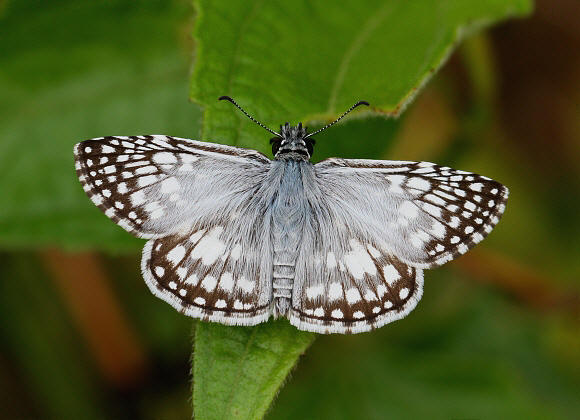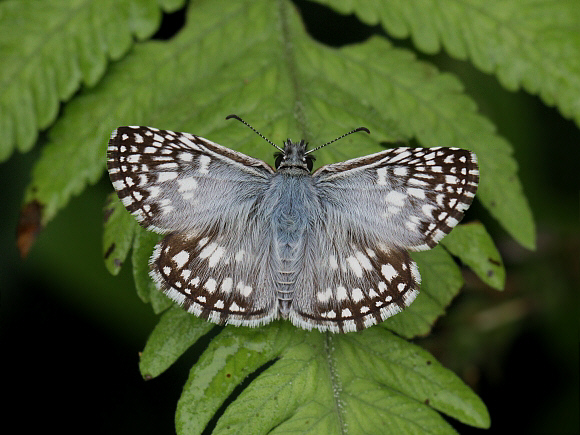
Introduction
The Pyrginae, popularly known as Flats or Spreadwings, are a cosmopolitan subfamily distributed across temperate and tropical habitats throughout the world. In the Americas there are 990 species, of which about 580 are assigned to the tribe Pyrgini.
The genus Pyrgus has dozens of representatives in Europe and temperate Asia. There are 8 species in North America, and 17 which occur in the neotropical region. In North America they are known as Chequered Skippers, which can be confusing because the butterflies known in Europe as Chequered Skippers belong to an entirely different subfamily – the Heteropterinae.
All males in the genus Pyrgus (and in several other Pyrginae genera) have the basal half of the leading edge of the forewing folded. Within the fold are hundreds of specialised wing scales called androconia, from which pheromones are disseminated to entice females into copulation. Males of orcus are covered with white downy scales giving them a beautiful ‘fluffy’ appearance.
Pyrgus orcus occurs from Mexico to Argentina. The extremely similar species P. oileus is primarily North American and does not occur south of Costa Rica.

Habitats
This butterfly can be found in a wide variety of disturbed semi-open habitats including pastures, forest glades and clearings, roadsides, grassland / forest mosaics and farmland. It can be found at elevations up to at least 1800m.
Lifecycle
The eggs are cream in colour and laid singly on the upperside of leaves. The caterpillar is yellowish green with darker blotches, a thin line along the back, and a black head. It feeds on the leaves of Malvastrum and Sida (Malvaceae). The pupa is greenish, or reddish-brown with a dark line along the back.

Adult behaviour
Both sexes bask on low herbage, bare ground or stones, with wings outspread. They have a rapid darting flight, always close to the ground. Males are territorial, using stones or small fallen branches as perches from which they dart up to intercept females or to challenge other males.
The butterflies visit a variety of low growing flowering plants for nectar, feeding with the wings held half open. At dusk they go to roost on dead flowers or on the terminal leaves of herbaceous plants growing in semi-open habitats such as grassy forest clearings, or along the edge of roadsides.
